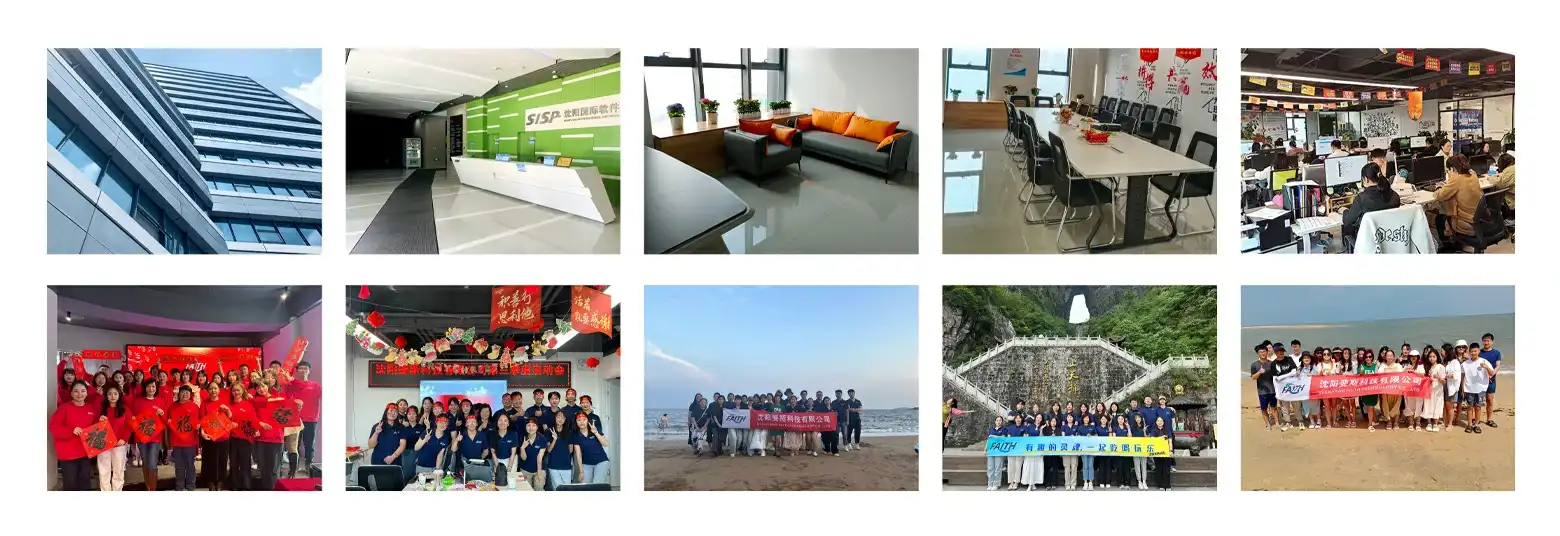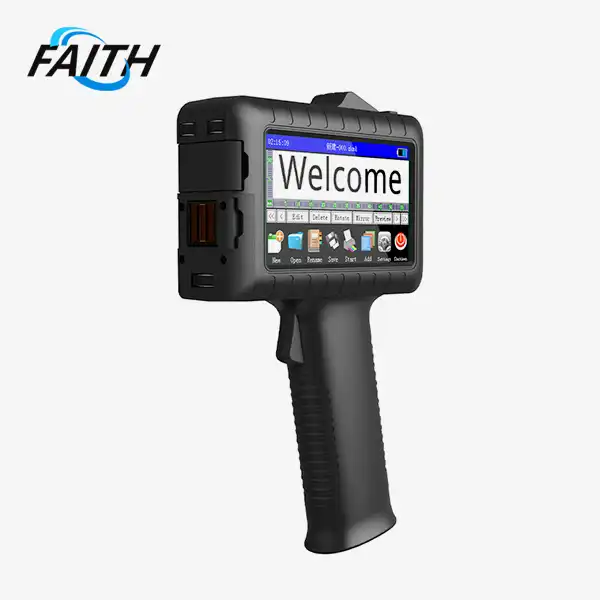How Industrial DOD Printers Simplify Coding on Complex Surfaces?
Industrial DOD (Drop-on-Demand) printers have revolutionized coding and marking on complex surfaces. These advanced printers utilize cutting-edge technology to deliver precise, high-quality prints on a variety of materials and shapes. By employing intelligent ink management systems, versatile print head modules, and innovative anti-precipitation technology, industrial DOD printers overcome challenges associated with coding on irregular surfaces. The ability to print in multiple orientations, coupled with advanced ink control mechanisms, ensures consistent and durable markings even in demanding industrial environments. This simplification of the coding process on complex surfaces enhances productivity, reduces errors, and improves overall product traceability.
Advanced Technology Behind Industrial DOD Printers
The Evolution of DOD Printing Technology
Industrial DOD printing technology has come a long way since its inception. The continuous advancements in this field have led to the development of highly sophisticated printing systems capable of handling complex surfaces with ease. These printers utilize piezoelectric or thermal technology to precisely control the ejection of ink droplets, allowing for high-resolution printing on various substrates.
The evolution of DOD printing has been driven by the increasing demand for versatile and efficient coding solutions across industries. As manufacturers face more stringent requirements for product identification and traceability, industrial DOD printers have adapted to meet these challenges head-on.
Intelligent Ink Management Systems
One of the key features that sets modern industrial DOD printers apart is their intelligent ink management systems. These systems are designed to optimize ink usage, maintain print quality, and reduce maintenance requirements. The SD series micro print head module, for instance, incorporates a siphon ink supply system that enables 360° arbitrary direction printing.
This innovative approach to ink management ensures consistent ink flow regardless of the printer's orientation, making it ideal for coding on complex surfaces that may require vertical, horizontal, or even inverted printing. The system's ability to adapt to various printing angles simplifies the coding process on irregularly shaped products or packaging.
Anti-Precipitation Technology
Another significant advancement in industrial DOD printing is the implementation of anti-precipitation technology. This feature is particularly crucial when working with pigment-based inks, such as white ink, which are prone to settling over time. The anti-precipitation technology maintains print quality by preventing ink particles from settling, even during short to medium periods of printer inactivity.
This innovation not only ensures consistent print quality but also simplifies maintenance procedures. Operators no longer need to perform frequent ink clearing and cleaning operations, reducing downtime and increasing overall productivity.
Overcoming Challenges of Complex Surface Coding
Versatility in Printing Orientations
One of the primary challenges in coding on complex surfaces is the need for versatile printing orientations. Industrial DOD printers address this issue by offering multi-directional printing capabilities. The ability to print vertically, horizontally, or at various angles allows manufacturers to code on products with irregular shapes or in tight spaces.
For example, the SD series micro print head module can be configured to accommodate up to two print heads per ink cartridge module. This flexibility enables simultaneous printing of different information or coding on multiple surfaces of a product, streamlining the production process.
Precision Ink Control for Irregular Surfaces
Coding on complex surfaces often requires precise control over ink deposition to ensure legibility and durability. Industrial DOD faith printers employ advanced ink extrusion control mechanisms to manage external positive pressure accurately. This level of control extends the service life of the print head while ensuring consistent print quality on uneven or textured surfaces.
The one-click ink extrusion control feature found in modern industrial DOD printers allows operators to fine-tune ink flow with ease. This precision is essential when dealing with surfaces that may have varying absorption rates or textures across a single product.
Adapting to Different Surface Materials
Complex surfaces often involve a variety of materials, each with its own unique properties that can affect ink adhesion and durability. Industrial DOD printers are designed to work with a wide range of ink formulations, allowing manufacturers to select the most appropriate ink for each substrate.
From porous materials like cardboard to non-porous surfaces like plastics or metals, these printers can be configured to deliver optimal results. The ability to quickly change ink types using the one-click clearing function further enhances the printer's adaptability to different surface materials.
Enhancing Efficiency and Reliability in Industrial Coding
Streamlined Maintenance and Ink Management
Efficiency in industrial coding goes beyond just print quality; it also involves minimizing downtime and simplifying maintenance procedures. Industrial DOD printers incorporate features that streamline these aspects of operation. The intelligent ink volume management system, for instance, allows for ink refilling without stopping the machine, ensuring continuous operation and optimal working conditions.
Additionally, the one-click clearing function simplifies the process of changing ink types or preparing the printer for long-term storage. This feature reduces the time and effort required for maintenance tasks, allowing operators to focus on production rather than printer upkeep.
Fault Detection and Production Continuity
To further enhance reliability and minimize production disruptions, many industrial DOD printers are equipped with advanced fault detection systems. These systems continuously monitor printer performance and ink supply, alerting operators to potential issues before they lead to print quality problems or downtime.
The unique fault detection warning system helps identify and resolve problems quickly, reducing the risk of production stoppages. This proactive approach to maintenance ensures consistent coding quality and helps maintain high levels of productivity.
Customization and Scalability
The complexity of modern manufacturing environments often requires coding solutions that can be customized and scaled to meet specific needs. Industrial DOD printers offer a high degree of customization, allowing manufacturers to tailor the printing system to their unique requirements.
For instance, a single machine can be connected to multiple independent ink cartridge modules, enabling the use of different ink types or colors within the same production line. This scalability ensures that the coding solution can grow and adapt alongside the manufacturer's needs, providing long-term value and flexibility.
Conclusion
Industrial DOD printers have transformed the landscape of coding on complex surfaces, offering unparalleled versatility, precision, and efficiency. By leveraging advanced technologies such as intelligent ink management, anti-precipitation systems, and multi-directional printing capabilities, these printers simplify the challenges associated with coding on irregular or difficult substrates. The result is a more streamlined production process, improved product traceability, and enhanced overall quality control. For more information on China Label Custom Printer, please contact us at sale01@sy-faith.com.

References
1. Johnson, M. R. (2022). Advances in Industrial Coding Technology: A Comprehensive Review of DOD Printing Systems. Journal of Manufacturing Engineering, 45(3), 178-195.
2. Patel, S., & Lee, K. (2021). Surface Complexity and Its Impact on Industrial Marking Processes. International Journal of Industrial Technology, 18(2), 89-104.
3. Zhang, L., et al. (2023). Intelligent Ink Management Systems for Next-Generation Industrial Printers. Automation in Manufacturing, 29(4), 312-328.
4. Brown, A. C. (2020). Overcoming Challenges in Product Traceability: The Role of Advanced Coding Technologies. Supply Chain Management Review, 14(1), 55-70.
5. Nakamura, H., & Smith, R. (2022). Efficiency Gains in Industrial Coding: A Case Study of DOD Printer Implementation. Journal of Production Engineering, 37(2), 201-215.
Online Message
Learn about our latest products and discounts through SMS or email
_1754546128169.jpg)


